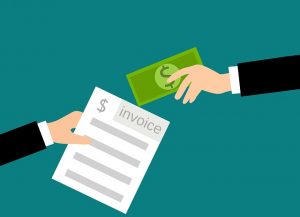With everything happening around us right now and as we battle an invisible enemy, it’s understandable to have a lot of questions. This FAQ is designed to answer most, if not all, your questions and includes information from the retirement plan relief bill that was signed into law by President Trump last Friday, March 27, 2020. Although the answers provided in this FAQ are general, we are here to help you walk through how the current (and future) events impact your 401(k) or 403(b) specifically. Above all, we wish you and your family stay safe and healthy.
From a business perspective, we’re here for you as usual. NESA has been set up in a remote/virtual environment since we launched the firm, meaning we have been able to continue operations uninterrupted while keeping our team safe and following proper guidelines. All of our systems are a “go” so that you can reach us when you need to. We’re also able to set up video calls via Zoom, WebEx, or Skype if for no other reason than to see another face during this time of social distancing.
Employer Contributions
Yes, the plan can be amended to remove the Safe Harbor contributions. The plan will need to notify participants at least 30 days in advance. Additionally, the plan must perform nondiscrimination testing, particularly ADP/ACP, for the full plan year.
No. The plan document already indicates that the match is fully discretionary and the employer (you) have the right to stop, decrease, or increase matching at any time.
No. Although you’re not required to provide any advance notices, it’s probably a good idea to do so. Feel free to ask our office if you need a sample letter for the match suspension.
Employee Contributions
Yes. You should continue to take deductions as usual unless an employee makes an election otherwise.
Yes. Small plans (typically fewer than 100 participants) are required to deposit employee contributions no later than 7 business days after deductions take place. Large plans are required to deposit contributions “as soon as possible.” This means that if the large organization was making contributions within 2 days of payroll, then that should continue.
Employee Loans and Withdrawals
Yes. You should continue to process them, or work with your TPA or provider to approve them timely.
Yes. First, hardship distributions (if allowed by your plan) can only be taken under certain circumstances – for example, to pay medical expenses. The SPD should have more information on this topic. Second, the CARES Act that was just signed into law on Friday, March 27, allows hardship withdrawals if an employee, his spouse, or children is affected by the coronavirus.
There are a few. First, some plans allow in-service distributions. For example, a plan may allow withdrawal for participants who is over age 59-1/2. Additionally, some plans may allow employees to withdraw rollover money at any age. Second, if the plan allows, employees can take out loans. The CARES Act doubles the loan limit to the lesser of $100,000 or 50% of the vested balance.
No. The CARES Act eliminates RMDs for 2020 calendar year. Generally, RMD is required to be taken by most participants who reach age 72.
Employee Terminations and Layoffs
Generally, yes they may withdraw 100% of their accounts. In most cases, former employees can log in to their accounts or call the recordkeeper to initiate withdrawals.
Yes, plan sponsors who layoff more than 20% of the workforce is considered to have had a partial plan termination. Generally, the consequence of a partial plan termination is that the plan must provide 100% vesting (if not already) to all affected employees.
Yes. However, you should weigh the pros and cons before doing so. Why? It may be cost-effective long term to amend the plan to eliminate any required employer contributions and/or tailor the plan to meet your current objectives. We are happy to discuss the options and help you make the proper decision.
Have a question? We have answers.




